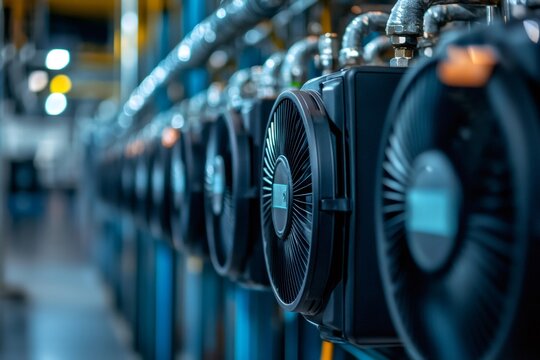Server rack cooling plays a critical role in maintaining the performance and reliability of data centers by preventing thermal shutdowns and data loss. Data centers host vast numbers of servers, which generate significant heat due to constant operation and high processing demands. Without adequate cooling, this heat buildup can cause servers to overheat, leading to hardware malfunctions, thermal shutdowns, and potentially catastrophic data loss. When servers overheat, they can trigger thermal shutdowns to protect themselves from irreparable damage. These shutdowns are designed to prevent overheating from damaging the internal components, but they can cause operational disruptions and downtime. If the heat persists without adequate cooling, the servers may not only shut down but could suffer permanent hardware damage, which may lead to data corruption or loss. Overheating can also reduce the lifespan of the server components, resulting in increased repair and replacement costs for businesses. To prevent these issues, proper server rack cooling systems are essential.

The acdcfan cooling systems are designed to remove the excess heat generated by the servers and maintain a stable and optimal operating temperature. There are several methods used in server rack cooling, including air cooling, liquid cooling, and advanced cooling technologies like in-row cooling or direct-to-chip cooling. Air cooling is the most common and cost-effective method, using fans to circulate cool air through the servers. These systems typically rely on the placement of racks within the data center to ensure proper airflow, avoiding hot spots where heat can accumulate. Adequate air circulation can keep the servers at the required temperature range, reducing the risk of thermal shutdowns. However, as data centers grow in size and the servers become more powerful, air cooling may become less efficient, and additional measures may be needed. Liquid cooling offers a more efficient alternative, especially in high-performance environments. In liquid cooling systems, coolant is circulated through pipes that are in direct contact with server components, efficiently absorbing heat.
This method can provide better cooling performance, especially in densely packed server racks. Liquid cooling helps maintain a more consistent temperature and reduces the need for large quantities of air conditioning, which can be costly and less effective in certain conditions. Advanced cooling technologies, such as in-row cooling and direct-to-chip cooling, are becoming increasingly popular in modern data centers. In-row cooling involves placing cooling units between server racks, directly addressing hot spots. Direct-to-chip cooling uses liquid cooling systems that target specific components of the server, such as the processor or memory, to maintain lower temperatures where heat is generated the most. Effective server rack cooling is not only about preventing thermal shutdowns but also about ensuring optimal performance for the servers. When servers operate at higher temperatures than recommended, their processing power may be throttled to reduce heat generation, impacting performance. Additionally, improper cooling can lead to inefficiencies in data transmission and processing speeds, affecting the overall productivity of the data center.
